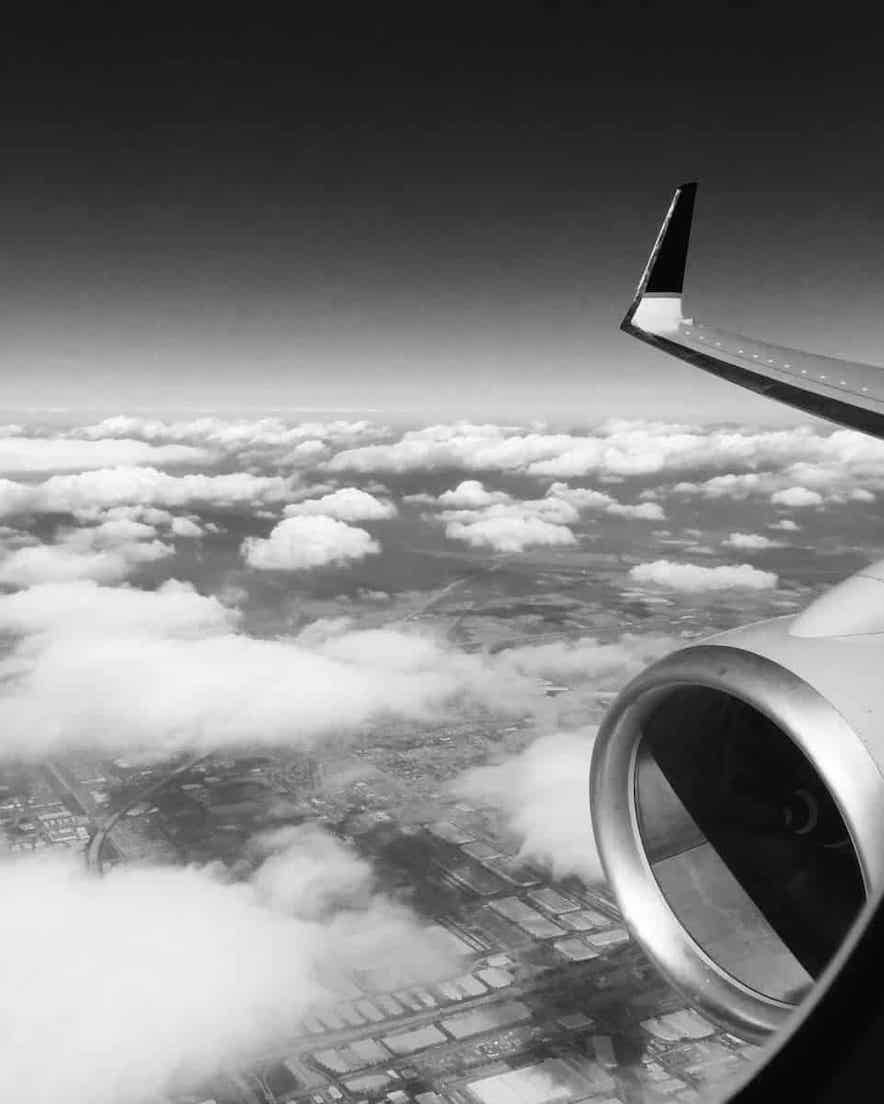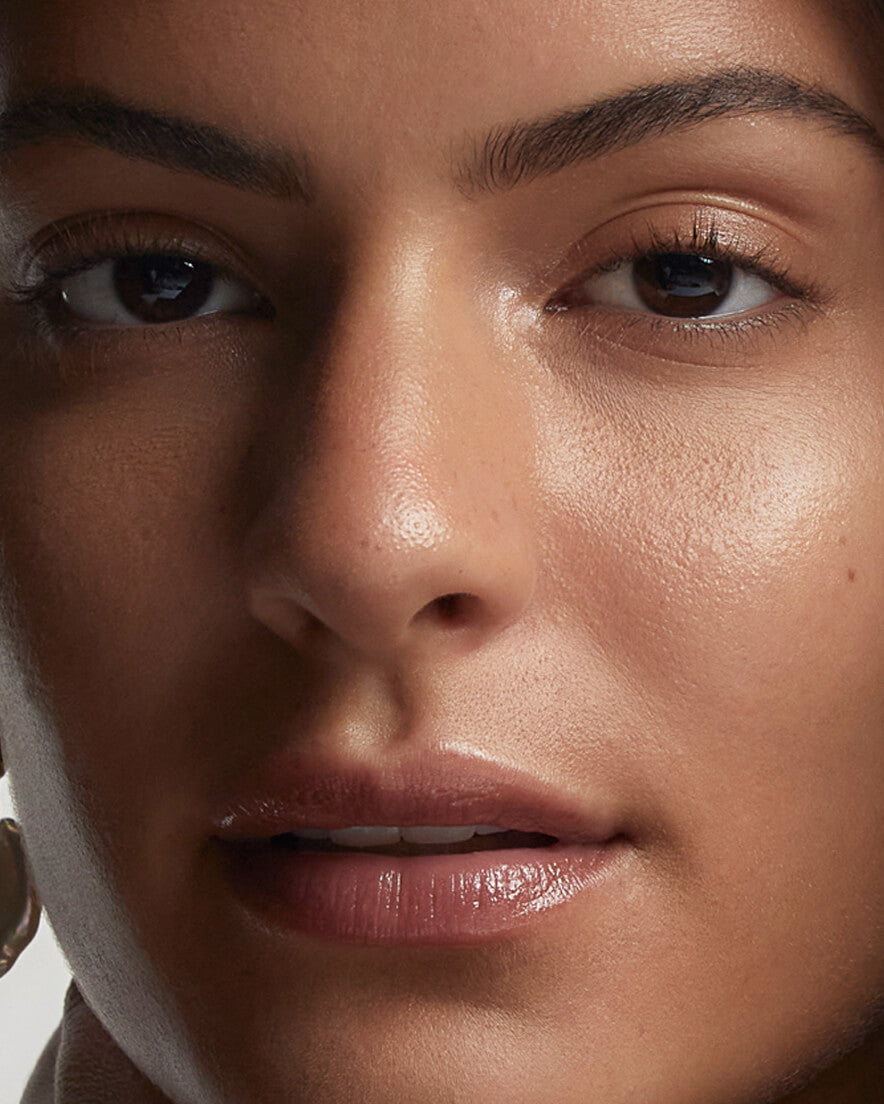I used to fly many air miles a year; mainly between North America and Europe, and one thing is I can say is that overall extended periods of time in flight are certainly not the best for the skin!
One main reason for this regrettable fact: Despite numerous ergonomic and technological advances in passenger aircrafts over the decades, little progress has been made concerning cabin air systems.
An estimated 50% of cabin air on a modern aircraft is recycled, because vacuuming fresh air from the outside of a cabin uses copious amounts of energy and fuel. Airlines are under increasing pressure to reduce fuel costs, and price competition between carriers today is fierce. Therefore, little incentive exists for airlines to reduce the use of recycled air, and there is currently no legislation in place to restrict the recirculation of air, nor any minimum standards on aircraft filtration systems.
Recycled air is detrimental to the skin because filtration systems eradicate much of the moisture from the air – normal air humidity is between 40% and 70%, but in an aircraft cabin humidity drops to about 20%. Recycled air also creates a particularly germ infested environment that contributes to facilitate the spread of colds, flu and other airborne diseases.
On a short flight, this isn’t too much of an issue, as our bodies are able to cope with short-term environmental changes; but, on long-haul flights (any trip over three hours), recycled air dehydrates our bodies, which impacts the skin negatively.
In fact, dehydration on a long distance flight can be so severe that in order to maintain a normal level of hydration, a passenger would need to consume about a pint of water every three hours.
Following are my tips for maintaining healthy and hydrated skin before, during, and after airline travel:
1. Buy two large bottles of water at the terminal
Take matters into your own hands and purchase two of the largest bottles of water that you can find in a terminal store after passing through TSA screening, since you are no longer allowed to bring liquids through these checkpoints.Water bottles are usually within reach in first class. If you fly economy and do not have enough time to buy water before boarding, do not be embarrassed to ask a flight attendant for two or three cups of water at once. Get up and walk to the flight attendant’s service area about once per hour to request more water. Getting up from one’s seat during a long flight is also essential for proper circulation and to prevent deep vein thrombosis (DVT) from setting in. Do not drink the water from the plane dispensary or use the ice onboard as this water is often substandard for drinking.
2. Book flight time and seat assignment with care
At 35,000 feet in the air, ultraviolet rays are more intense, and radiation levels are higher – which can cause longterm damage to your the skin. To lessen this unsafe exposure, it is preferable to fly at night, when possible. Even though the sky may be dark during evening flights, be certain to draw the shade anyway in order to avoid the bright, glaring lights during takeoff and landing.With a window seat, one has better control over the shade and does not have to inconvenience another passenger with requests to close the screen. If you must fly during daylight hours, a large pair of sunglasses and a hat worn in-flight can help to shield one’s eyes and facial skin from harsh UV light. Sunscreen is imperative during such flights!
3. Remove make-up before boarding
Boarding gates are usually located close to restrooms, which makes it easy to remove make-up prior to embarking. On a flight, the last thing people are looking at is you, so don’t worry about flying au natural. Having a bare face is helpful to maintain hydration during the flight. (TIP: Try our Luminous Cleansing Elixir for a moisturizing cleanse pre-flight)
4. Use a good moisturizer and reapply as needed
Apply moisturizer to clean skin mid flight as necessary (when skin starts to feel dry or “tight” again).
TIP: We also offer convenient travel-sizes (15 mL bottles) of our celebrated facial moisturizes for ease of use on-the-go!
Clean fingers with hand-sanitizer or wipes before application. You can also use a cleansing pad for the face or our Conditioning Tonic with Chamomile as a refresher between application of your moisturizer. I like to use a small water mister to spray on my face before reapplying my moisturizer to seal in some added hydration.
5. Skip alcohol and caffeine
Beverages that contain alcohol never have a beneficial effect on the skin, but their consumption close to or during flight-time can be particularly detrimental. Alcohol catalyzes dehydration and will disrupt hydration efforts undertaken during flight. Caffeine is also dehydrating. It is advisable to skip both during flight time.
6. Take a nap
Getting a bit of sleep on a long distance flight is a good idea, because our bodies repair cellular damage then. I always take earplugs, a comfortable pillow and a soft blanket that I hide under for warmth, blocking the sun and overhead lights. Comfortable noise cancellation headphones or relaxing music can also be helpful for lulling the body into a nap.
7. Rehydrate
After disembarking from the plane, make an effort to rehydrate post-flight with water, tea, or other clear liquids.
8. Finally, bathe and moisturize
Post flight, bathe first, then moisturize. It is important to remove the grime, germs, etc. from the flight. (Always have a change of clothing as well!) The combination of the moisture from a shower or bath and the moisturizer itself will hydrate your skin deeply. I always feel a sense of relief and gratitude to feel clean again after hours of air travel!
Thanks!
You’ll receive an email when it’s back.
featured products
related
Products
Dry Skin? Try a Water-Free Formulation
Take a look at ingredient listings the next time you are shopping for skincare, and you will notice that “water/aqua” is usually listed at the top of th...
ReadThe Retrouvé Difference
Why We Do Not Add Perfumed Fragrance to Our Formulations
The scent, texture and function of Retrouvé is both scientific and artful.
ReadSkin Care
Why a Self-Care Routine is Essential
If the pandemic taught us anything, it’s the importance of self-care.
ReadSkin Care
Celebrating 10 Years with 10 Suggestions for Self-Care
Birthdays at my age are times when I definitely reflect more on age and aging. I personally endeavor to try to stay as healthy as I can holistically for...
ReadSkin Care
The Skin Barrier Explained
Our skin is our body's largest organ and serves as a vital barrier between the internal systems of our bodies and the outside world.
ReadSkin Care
5 Little-Known Causes of Winter Skin Problems—and the Best Remedies
The basic do’s and don’ts of winter skincare are repeated every season in beauty stories: switch to gentler, more hydrating formulas, apply moisturizer ...
Read







